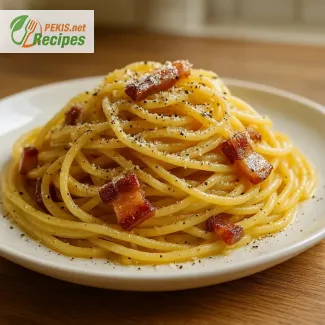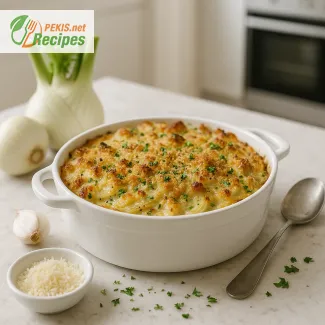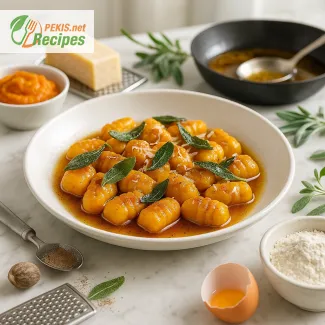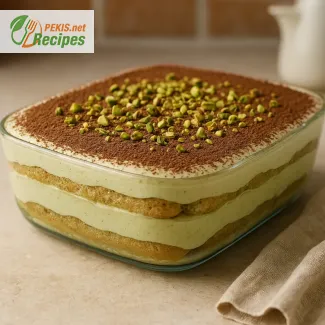
The Secrets Behind a True Roman Carbonara
Discover the origin, flavor, and soul of Italy’s most iconic pasta
In the heart of Roman cuisine, there exists a dish that perfectly captures the essence of Italian culinary tradition: Carbonara. With just a few humble ingredients—eggs, pecorino romano cheese, guanciale, and black pepper—this timeless classic delivers a depth of flavor that continues to captivate generations. The magic of a well-made Italian Carbonara lies not in complexity, but in authenticity and balance. There is no cream, no garlic, and definitely no shortcuts in a traditional preparation. Every bite must echo the smoky richness of cured pork, the sharp bite of aged cheese, and the silkiness of eggs transformed into a velvety sauce.
What makes this dish so alluring is not only its taste but its cultural resonance. It's a staple of Roman trattorias, a go-to comfort food, and a symbol of Italy’s culinary identity. And yet, despite its simplicity, achieving the perfect carbonara requires understanding its roots, mastering its technique, and respecting its ingredients.
Why Carbonara Is More Than Just Pasta
Unlike many globally popular pasta dishes, Carbonara is fiercely regional. Originating from Lazio, and particularly from Rome, the recipe is deeply entrenched in local traditions. Guanciale, made from pork cheek, is non-negotiable for purists—it offers a rich, fatty flavor unmatched by bacon or pancetta. The use of pecorino romano (not parmesan) gives it that bold, salty edge essential to a classic carbonara.
At its core, Carbonara is a reflection of rustic Italian cooking: transforming a few pantry staples into something elegant. The eggs, when emulsified properly with hot pasta and fat from the guanciale, form a creamy, luscious sauce that coats each strand of spaghetti or rigatoni like silk. There's no cream in sight—what gives carbonara its signature richness is the careful timing and technique during the mixing process.
Ingredients That Define Authentic Carbonara
The soul of this recipe lies in the quality of its ingredients. Using fresh, room-temperature eggs is crucial to achieving the right texture. Pecorino romano, with its sharp and tangy character, must be finely grated to melt effortlessly into the sauce. Freshly ground black pepper is more than seasoning—it’s a defining flavor component. And most importantly, the guanciale must be cooked just right: crispy on the outside, but still tender and juicy within.
Choosing the right pasta is also important. While spaghetti alla carbonara is the most well-known variant, some Roman kitchens opt for rigatoni or mezze maniche. These shapes capture more sauce in their ridges and curves, enhancing the overall mouthfeel of the dish.
Common Mistakes and How to Avoid Them
Despite its short ingredient list, Carbonara is often misunderstood outside Italy. The most common error is the addition of cream, which not only dilutes the flavor but breaks the balance. Similarly, cooking the eggs directly over heat can lead to scrambled results. The secret is to remove the pan from heat before incorporating the egg and cheese mixture, letting the residual warmth do the work.
Another frequent mistake is overcooking the guanciale, which can render it tough and too salty. The goal is to render the fat gently, allowing it to melt into the dish while preserving the meat’s tenderness. Overloading on cheese or salt can also upset the harmony of flavors—Carbonara should be bold but never overwhelming.
The Cultural Legacy of Carbonara in Italy
This dish isn’t just a recipe; it's a cultural ritual. In Rome, it represents the height of simplicity and perfection. Restaurants that specialize in traditional Roman fare often feature Carbonara as a signature dish, and local chefs take pride in preparing it by the book.
There are even annual festivals and international debates over the "correct" way to make Carbonara, highlighting its iconic status in global cuisine. Yet in Italy, the answer remains simple: fewer ingredients, better technique, and absolute respect for tradition.
How Carbonara Evolved Outside Italy
As Carbonara’s fame spread, so did its variations—often to the chagrin of Italian purists. Versions with cream, mushrooms, onions, or even chicken have become popular in various parts of the world. While these may be tasty in their own right, they stray far from what is considered an authentic carbonara. The charm of the original lies in its restraint and purity, making it a masterpiece of minimalism.
For those seeking to bring the true Roman experience to their own kitchen, understanding what not to do is just as important as mastering the correct process.
How to Achieve the Perfect Texture and Flavor
Temperature and timing are everything. Once the pasta is al dente and the guanciale has rendered its fat, the heat must be turned off. The egg and cheese mixture should be poured in with confidence and stirred vigorously to avoid curdling. The result? A sauce that clings lovingly to each strand of pasta, rich and savory with layers of umami from the cheese and meat.
Some Roman chefs recommend saving a few spoonfuls of pasta water to adjust the sauce’s consistency. This water, rich in starch, can loosen the mixture without diluting the flavor.
The finishing touch is freshly cracked black pepper, ideally coarsely ground for a burst of aroma and a touch of heat. It’s this sharp contrast that cuts through the richness, balancing the dish beautifully.
When to Serve and What to Pair It With
Carbonara is best enjoyed immediately, served hot from the pan. While traditionally a first course (primo piatto) in Italian meals, it can easily stand as a hearty main. It pairs well with crisp, dry white wines such as Frascati, Verdicchio, or Soave, which help cleanse the palate between bites.
A fresh green salad with a tangy vinaigrette can also provide contrast, but the focus should always remain on the star: the carbonara itself.
Why This Classic Endures
Few dishes embody the soul of a cuisine as completely as Carbonara does for Italy. Its balance of richness and simplicity, of technique and tradition, speaks to everything great about Italian food. Whether you're discovering it for the first time or returning to it like an old friend, an authentic Roman Carbonara is a dish that deserves care, respect, and above all, joy.
- Prepare the guanciale:
Cut the guanciale into small strips about 1 cm (0.4 inch) wide. Place them in a cold non-stick pan and slowly render the fat over medium-low heat. Stir occasionally until the meat is golden and crispy, about 6–8 minutes. Turn off the heat and let it rest in its rendered fat. - Cook the pasta:
Bring a large pot of salted water to a boil (use about 10 g (2 tsp) of salt per liter/quart of water). Cook the spaghetti until al dente, typically about 8–9 minutes. Reserve about 150 ml (½ cup) of the pasta water before draining. - Make the carbonara sauce base:
While the pasta is cooking, whisk the egg yolks in a large mixing bowl until creamy. Add the finely grated pecorino romano cheese and a generous amount of freshly ground black pepper. Mix until well combined. - Combine all components:
Add the hot drained spaghetti directly into the bowl with the egg and cheese mixture. Toss quickly and energetically using tongs or a spoon so the residual heat of the pasta cooks the yolks and creates a creamy emulsion. Gradually add a few spoonfuls of the reserved pasta water if the mixture is too thick. - Incorporate guanciale and fat:
Add the crispy guanciale and its rendered fat to the pasta, mixing thoroughly to coat all the strands evenly. - Final seasoning and serving:
Taste and adjust with additional pecorino or pepper if desired. Serve immediately, optionally topped with a touch more cheese and pepper.
Elevating the Essence of Carbonara at Home
Tips and ingredient swaps that enhance flavor, texture, and health balance
Perfecting a classic carbonara is already a triumph, but for culinary enthusiasts seeking more depth or healthier adjustments, there’s ample room to personalize without compromising authenticity. The key lies in subtle refinements—thoughtful choices that respect the Roman roots while tailoring the dish to your preferences or dietary needs. Below are professional insights to help you bring your carbonara to a higher level, both in flavor and nutritional integrity.
Improving the taste with simple ingredient upgrades
Guanciale is traditional and revered for its deep, porky richness, but if unavailable, high-quality pancetta can offer a decent substitute. Look for versions that are dry-cured and have a firm fat-to-meat ratio. While bacon is a popular fallback, it imparts a smokier taste that shifts the profile from the original Roman flavor—an acceptable choice if you're looking for a more robust, North American edge.
Upgrading to aged pecorino romano aged over 12 months adds complexity and a slightly crumbly texture that melts more evenly into the sauce. For a gentler taste, mixing pecorino with a touch of Parmigiano-Reggiano can balance sharpness with umami sweetness.
Using freshly cracked black pepper instead of pre-ground enhances not just the aroma but also the texture, adding bright, peppery bites that cut through the creaminess of the sauce. A coarse grind is ideal for this purpose.
How technique impacts the final dish
The most critical step in carbonara is emulsifying the eggs and cheese into a silky, smooth sauce without scrambling. To improve your consistency, pre-warm the mixing bowl with a splash of the pasta water, then dry it before adding the yolks and cheese. This primes the bowl to gently cook the yolks upon contact with hot pasta, reducing risk of clumps.
If your kitchen is cold, consider placing the mixing bowl over a pot of warm water (not boiling) to maintain ideal temperature during the tossing process. This creates a gentle bain-marie effect, helping the sauce come together more fluidly.
Saving more pasta water than needed gives you options to tweak the sauce’s thickness after mixing. A spoonful of hot, starchy water can loosen a tight sauce or reheat it gently if needed without overcooking.
How home preparation outshines restaurant versions
Making carbonara at home ensures you’re using real ingredients, avoiding shortcuts like cream, butter, or oil. Many commercial kitchens rely on added fats or thickeners for consistency, especially when preparing in bulk. At home, you control the quality and freshness, from the eggs to the cheese, ensuring superior flavor and texture.
It also allows for dietary customization—you can reduce sodium by using less pecorino, lower saturated fats by swapping out guanciale with turkey bacon, or add fiber by selecting whole-grain pasta. These tweaks are often not available in restaurants, where tradition or volume cooking takes precedence.
Mistakes to avoid for a flawless result
One of the most common missteps is overcooking the egg mixture, which results in scrambled eggs instead of sauce. Avoid adding the egg and cheese mix directly to the pot or pan. The pasta should be hot, but the heat source must be off during mixing.
Don’t overload on cheese or salt—pecorino is naturally very salty, and adding too much can make the dish overpowering. Similarly, boiling pasta in overly salted water can compound the issue.
Cooking the guanciale too quickly is another pitfall. Rendering the fat slowly over low to medium heat ensures the meat becomes crisp while staying juicy. A burnt or rubbery texture ruins the balance of fat and crunch.
Avoid pasta shapes with too many ridges or holes. Stick to spaghetti or rigatoni, which allow for even coating and ideal texture contrast.
Healthier adjustments without losing integrity
If you're looking for a lighter version, use whole eggs instead of just yolks. This reduces cholesterol and adds a lighter texture. You can also switch to whole-wheat pasta to boost fiber and stabilize blood sugar levels after the meal.
Choosing lower-fat aged cheese or reducing the cheese quantity while increasing black pepper gives the sauce complexity without excess sodium or fat. Replace half the cheese with nutritional yeast for a dairy-free boost of umami and B-vitamins.
For a vegetarian adaptation, use smoked mushrooms like shiitake or king oyster seared until crispy. Their umami depth mimics guanciale’s savory edge while remaining plant-based.
Exploring modern enhancements while respecting tradition
Some chefs add a touch of lemon zest to brighten the flavor profile and lift the richness, especially when using fattier guanciale. A drizzle of infused olive oil, such as garlic or black truffle, can layer in aroma when used sparingly at the end.
Others experiment with infusing the pasta water with a garlic clove or a bay leaf to subtly perfume the noodles. These additions must be minimal so they don’t overpower the pure, peppery richness that defines carbonara.
You can also top the finished plate with microgreens or parsley for visual freshness and a faint bitter contrast, creating a more modern plating style that doesn’t alter the original ingredients.
These refinements and considerations allow passionate home cooks to reimagine carbonara while preserving its Roman soul. Whether aiming for authenticity or adapting to health needs, understanding the recipe's foundation is the key to thoughtful, delicious variations.
Allergens present in the recipe:
- Eggs
- Milk (Pecorino Romano – sheep’s milk)
- Gluten (wheat in spaghetti)
How to replace allergenic ingredients:
- Eggs: Use vegan egg yolk substitute (e.g., silken tofu + nutritional yeast), but note that texture will change.
- Milk (Pecorino): Replace with aged sheep-free cheese alternative or nutritional yeast + salt (non-dairy).
- Gluten: Use gluten-free pasta made from corn, rice, or legumes.
Vitamins and minerals per serving (approximate):
- Vitamin A: 310 µg – supports vision and immune function
- Vitamin D: 1.4 µg – essential for calcium absorption and bone health
- Vitamin B12: 1.9 µg – supports nerve function and red blood cell production
- Calcium: 290 mg – important for bone health and muscle function
- Iron: 2.6 mg – supports oxygen transport in blood
- Magnesium: 45 mg – helps muscle relaxation and nerve function
- Zinc: 2.2 mg – supports immune system and wound healing
- Phosphorus: 270 mg – vital for energy production and bone health
Antioxidants per serving (approximate):
- Lutein + Zeaxanthin: 180 µg – protect eyes from oxidative damage
- Selenium: 21 µg – contributes to antioxidant defense and thyroid function
- Vitamin E: 1.2 mg – protects cells from free radicals
- Phenolic compounds (from black pepper): 25 mg – anti-inflammatory and digestive benefits
- Conjugated linoleic acid (CLA from cheese): 20 mg – supports metabolism and immune modulation





